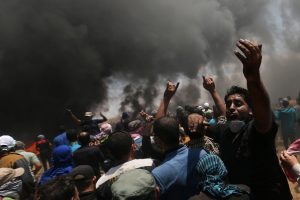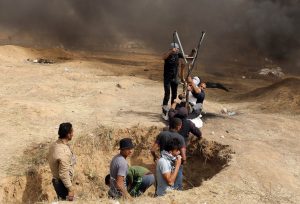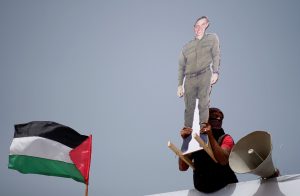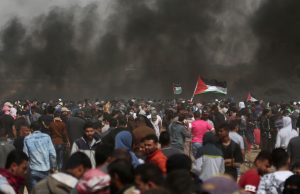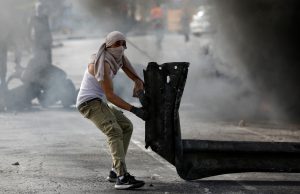
By Lisa Maria Garza
GRAPEVINE, Texas (Reuters) – After years of poor pay, supply shortages and overcrowded classes, former Oklahoma teacher Chelsea Price decided the best way to pursue the profession she loves was to leave her home state and head south to Texas.
The harsh economic realities of teaching in Oklahoma, where school salaries are some of the lowest in the United States, have created an exodus to neighboring states where wages are higher.
As a consequence, Oklahoma is grappling with a teacher shortage that has forced school districts to cut curricula and deploy nearly 2,000 emergency-certified instructors as a stop-gap measure.
“It just got to the point where it was really defeating,” said Price, 34, who last year moved to the Dallas suburb of Grapevine with her husband and 10-year-old daughter to start a job as a second-grade teacher.
Crossing the Red River that separates Oklahoma and Texas meant a salary increase of about 40 percent for Price, who has a master’s degree. She saw few prospects of improving the lot of her family by staying put.
Price earned around $30,000 a year when she began teaching in Oklahoma. When she left 11 years later, she was earning just under $40,000. At her new position, Price earns about $55,000.
The benefits transcend salary. There is a cap on class sizes and every student has an iPad, which Price said makes her job easier.
In Oklahoma, where educators statewide walked off the job this week to protest years of low pay and budget cuts to the school system, teacher complaints range from decaying infrastructure, students’ having to share worn-out textbooks and teachers’ having to dip into their own pockets to buy supplies for underfunded classes.
In contrast, the northern Dallas suburbs, an hour or less south of the Oklahoma border, enjoy increased spending on schools as population growth in recent years, which has outpaced nearly every area of the United States, has driven up local tax revenues.
Grapevine, with about 50,000 people, has a refurbished main street, a major resort hotel and easy commutes to major employers in Dallas and Fort Worth. Like many of the northern Dallas-area suburbs, new parks, schools and businesses are springing up in a region seen as a place of relatively low crime, good employment prospects and affordable housing.
Oklahoma City and Tulsa also have relatively low unemployment rates and spectacularly refurbished urban areas, but median household income and wages are far lower than in the northern Dallas suburbs.
Price and other teachers from Oklahoma have followed the money.
“If I can find a better situation for all of us, then why wouldn’t I?” she said.
Since 2010, Texas has seen about 3,500 teachers from Oklahoma apply for teaching certificates, the most of any state, according to the Texas Education Agency.
“LOSING OUR BEST, BRIGHTEST”
About 11 percent of Oklahoma teachers overall leave the state or profession every year, according to data from the Oklahoma State School Boards Association, an umbrella group.
More than 80 percent leave over low pay, according to the data. In constant dollar terms, the pay for Oklahoma teachers has dropped by about 15 percent over the last 25 years, federal data showed.
“Oklahoma’s teacher shortage has been devastating for children. When schools can’t find qualified teachers, they either must increase class sizes or hire under-qualified, under-prepared teachers,” said Shawn Hime, executive director of the association.
Every state bordering Oklahoma offers higher wages for teachers, with mean wages in the neighboring states about $8,600 to $16,000 higher, according to the U.S. Bureau of Labor Statistics.
Striking teachers in Oklahoma are seeking a $10,000 raise.
Those leaving are often teachers who have several years of experience and generally hold a master’s degree or higher, according to a survey from Theresa Cullen, an associate professor of educational psychology at the University of Oklahoma. The average salary increase for those who fled to other states was about $19,000, the survey showed.
“We are losing our best, brightest and most prepared,” Cullen said.
Of neighboring states, Texas offers the highest mean wages. Ginny Duncan, 24, decided to relocate there two years after starting her teaching career at an elementary school in Tulsa.
“I’m moving to Texas this summer because I can’t afford to live here,” she said in a telephone interview.
Duncan, who holds degrees in both special education and regular education, earns about $32,000 a year as a teacher and needs to work three summer jobs to make ends meet. If she can land a similar teaching job in the Dallas area, she could earn about $20,000 a year more.
“I love teaching so much,” Duncan said. “I wanted to be a teacher my entire life. I have a special passion for special needs kids.” But her Oklahoma salary “makes it so hard to actually do it.”
(Additional reporting by Jon Herskovitz in Austin, Texas, and Barbara Goldberg in New York; Writing by Jon Herskovitz; Editing by Frank McGurty and Leslie Adler)




